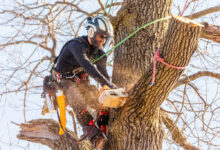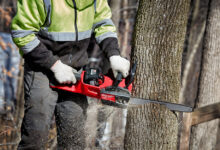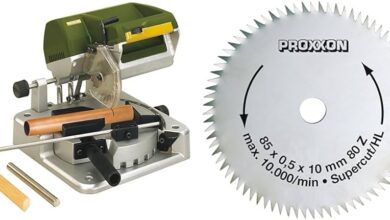Contents
- 1 Introduction
Introduction
Embarking on the task of chainsawing softwood requires a combination of knowledge, technique, and preparation. Whether you’re a seasoned professional or a novice venturing into the world of forestry, understanding the nuances of chainsawing softwood is crucial to not only ensuring maximum efficiency but also minimizing safety hazards. This comprehensive guide will delve into every aspect of chainsawing softwood, from selecting the ideal chainsaw to employing proper cutting techniques and maintaining your equipment. By assimilating this information, you’ll equip yourself with the necessary knowledge to embark on your softwood chainsawing endeavors with confidence and proficiency.
The Anatomy of Softwood
Softwood, typically derived from coniferous trees such as pine, spruce, and fir, possesses unique characteristics that influence its behavior during chainsawing. These trees exhibit a fast growth rate, resulting in less dense wood with a higher moisture content. Consequently, softwood tends to be softer, easier to cut, and less prone to splintering compared to hardwood. Understanding these inherent properties is essential for selecting the appropriate chainsaw and adopting the correct cutting techniques.
Selecting the Ideal Chainsaw
Choosing the right chainsaw for the job at hand is paramount. Factors such as the size and type of softwood, the intended cutting tasks, and your level of experience should guide your decision. For small-scale projects involving relatively softwood, a lightweight electric chainsaw may suffice. However, for larger projects or cutting harder softwoods, a more powerful gas-powered chainsaw is recommended. Consider the following key features when selecting a chainsaw:
Power:
Measured in cubic centimeters (cc), power determines the cutting capacity of the chainsaw. Higher power allows for faster cutting speeds and the ability to handle larger logs.
Bar Length:
The length of the chainsaw’s guide bar determines the maximum diameter of logs that can be cut. Choose a bar length that is appropriate for the size of the softwood you intend to cut.
Chain Type:
Different chain types are designed for specific cutting applications. For softwood, a semi-chisel or full-chisel chain is typically recommended, as they offer a balance between sharpness and durability.
Proper Chainsawing Techniques
Mastering proper chainsawing techniques is crucial for both efficiency and safety. Follow these essential guidelines to ensure optimal results:
Control and Posture:
Maintain a firm grip on the chainsaw’s handles, with your left hand on the front handle and your right hand on the rear handle. Stand with your feet shoulder-width apart, knees slightly bent, and back straight.
Starting the Cut:
Position the chainsaw’s guide bar on the intended cutting line, with the chain brake engaged. Slowly accelerate the engine and release the chain brake to begin cutting.
Cutting Technique:
Apply gentle downward pressure while guiding the chainsaw along the cutting line. Avoid forcing the chainsaw, as this can lead to stalling or kickback.
Pinch Prevention:
When cutting logs that are wider than the guide bar, use a wedge or leverage to prevent the log from pinching the chain.
Felling Techniques:
Felling large trees requires special techniques to ensure safety and control. Always assess the tree’s surroundings, plan your escape route, and make the initial cut on the side of the tree facing the desired direction of fall.
Maintaining Your Chainsaw
Regular maintenance is essential for keeping your chainsaw in optimal working condition and ensuring longevity. Follow these simple steps to ensure your chainsaw performs at its best:
Chain Sharpening:
A sharp chain is crucial for efficient cutting. Sharpen the chain regularly using a file or grinding wheel, ensuring that all teeth are evenly sharpened.
Chain Tensioning:
Proper chain tension is vital for safe and effective operation. Check the chain tension frequently and adjust it as necessary according to the manufacturer’s guidelines.
Bar Maintenance:
Inspect the guide bar regularly for wear or damage. Clean the bar and lubricate the rails to prevent friction and ensure smooth operation.
Air Filter Cleaning:
A clean air filter ensures proper engine operation. Regularly clean or replace the air filter to prevent engine damage from dirt and debris.
Tips for Enhanced Efficiency
In addition to the fundamental principles outlined above, consider these additional tips to further enhance your chainsawing efficiency:
Use a Sharp Chain:
A sharp chain cuts faster, reduces strain on the chainsaw, and produces smoother cuts. Invest in a quality chain sharpener and keep your chain sharp at all times.
Lubricate Regularly:
Regular lubrication of the chain and guide bar reduces friction and wear, extending the life of your equipment. Use a specifically formulated chainsaw lubricant.
Cut at the Correct Speed:
Each chainsaw has an optimal operating speed for cutting softwood. Experiment to find the ideal speed for your chainsaw and maintain it throughout the cutting process.
Avoid Overheating:
Prolonged operation can cause the chainsaw to overheat. Allow the chainsaw to cool down periodically to prevent damage.
Safety Precautions
Chainsawing involves potential hazards, so prioritizing safety is paramount. Always adhere to the following precautions:
Wear Protective Gear:
Always wear proper protective gear, including hard hat, earplugs, safety glasses, gloves, and sturdy boots, when operating a chainsaw.
Inspect Your Chainsaw:
Before each use, inspect the chainsaw for any damage or loose parts. Ensure that the chain brake is functioning correctly.
Maintain a Safe Distance:
Keep bystanders at a safe distance from the cutting area and be aware of your surroundings at all times.
Avoid Kickback:
Kickback occurs when the tip of the chainsaw blade touches an object, causing the chainsaw to be violently thrown back towards the operator. Use caution when cutting near branches or other obstacles, and always keep a firm grip on the chainsaw.
Plan Your Escape Route:
Before felling a tree, plan your escape route in case it falls in an unexpected direction.
Strengths and Weaknesses of Chainsawing Softwood
Strengths:
Softwood is generally easier to cut than hardwood due to its lower density and higher moisture content. This makes chainsawing softwood less physically demanding and more efficient.
Softwood is less prone to splintering than hardwood, resulting in cleaner cuts and a reduced risk of injury.
Softwood is more abundant and readily available compared to hardwood, making it a more economical option for construction and other projects.
Weaknesses:
Softwood is not as strong or durable as hardwood, making it unsuitable for applications requiring high strength and longevity.
Softwood is more susceptible to rot and decay compared to hardwood, especially in humid or wet environments.
Softwood can be more difficult to split than hardwood, which may be a disadvantage for certain applications such as firewood preparation.
Table: Softwood Tree Species and Cutting Characteristics
| Tree Species | Density (kg/m³) | Janka Hardness | Nail-Holding Strength |
|—|—|—|—|
| Pine | 450-550 | 660 | 6.3 N |
| Spruce | 350-450 | 380 | 5.2 N |
| Fir | 390-490 | 420 | 6.1 N |
| Hemlock | 420-520 | 440 | 5.8 N |
| Douglas Fir | 500-600 | 630 | 7.2 N |
FAQs
Q: What chain type is best for cutting softwood?
A: A semi-chisel or full-chisel chain is recommended for cutting softwood, as they offer a balance between sharpness and durability.
Q: How often should I sharpen my chainsaw chain?
A: The frequency of chain sharpening depends on the amount of use and the type of wood you are cutting. As a general guideline, sharpen your chain every 4-8 hours of cutting time.
Q: How do I prevent my chainsaw from overheating?
A: Allow the chainsaw to cool down periodically, especially if you have been cutting for a prolonged period. Avoid running the chainsaw at high speeds for extended periods.
Q: What is the most common cause of kickback?
A: Kickback occurs when the tip of the chainsaw blade touches an object, causing the chainsaw to be violently thrown back towards the operator. Always keep a firm grip on the chainsaw and be aware of your surroundings to reduce the risk of kickback.
Q: What are some tips for felling a tree safely?
A: Before felling a tree, inspect the tree for any signs of decay or damage. Plan your escape route and ensure that the tree will fall in a









